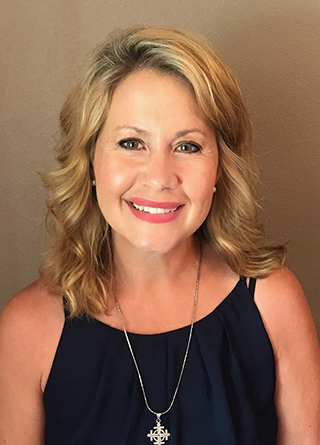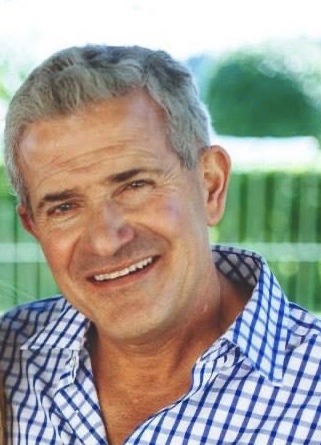NWC mental health, long-term care workers witness fear, isolation and loneliness firsthand throughout pandemic

“Stay safe.” It was the mantra spoken over 2020 as the COVID-19 pandemic swept through the nation. Regardless of whether a person contracted COVID or not, everyone has been impacted by the societal shifts that happened this past year. Social distancing, mask mandates, long-distance learning models and stay at home orders deeply affected everyday life—and people’s mental health.
The Northwest Conference is home to many experts who care for families and children and those who serve residents within long-term care facilities. In this story, we focus on two individuals who attest to how COVID and the resulting safety-focused disruptions have put a strain on emotional well-being.
Families and Children

Kari Jacott of Owatonna, MN, was previously on staff at Linwood Covenant Church and currently serves as interim guest pastor for Monticello Covenant Church. She is a clinical mental health therapist at Fernbrook Family Center who counsels individuals, couples and families.
“The normal societal systems that create structure and normalcy were significantly altered [this past year],” Jacott said. “That brings a lot of grief and loss.”
Within her practice, Jacott has seen how the disruptions have significantly affected families.
“It’s exposed family systems that were already struggling and exacerbated it even more,” she said.
Juggling a changing work environment with overseeing children’s schooling in and out of the classroom has put added stress on parents.
“They are experiencing an experiment of schooling none of us have ever dreamed would happen in our lifetimes,” Jacott said. “Truancy is increasing, and parents and teachers are at a loss as to how to get students to comply.”
Jacott also sees that the isolation children are experiencing has negative impacts on their mental health. In the fall, Jacott’s daughter contracted COVID which placed the entire family on quarantine. Her 10-year-old son missed being in school and, on the day he went back, his teacher announced that they would be returning to distance learning because COVID numbers were increasing in the community.
“He related to me that one of his classmates burst into tears, followed by other children crying. He said to me, ‘Mom, I wanted to cry too, but I didn’t.’ My heart just broke as he shared, and we cried together,” Jacott said.
While the implications of isolation are not fully realized yet, anger is a common emotion Jacott hears about.
“[This] prompts me to ask what is below the surface, as anger is a secondary emotion usually expressed on the surface,” Jacott said. “For children, this will be emotions like frustrated, disappointed, overwhelmed, scared, confused, etc.”
This season has revealed fragility and how much people need physical connection, as well as the importance of societal structures for normalcy.
“Especially for children, we need to have things that are predictable. And this past year has been very unpredictable,” Jacott said. “For people who have anxiety over illness, [COVID has] intensified it even more. For people who were already lonely, it increased their loneliness and isolation. I think we have to look at those things and really be mindful and aware of them.”
Jacott has seen how COVID has brought fears and anxieties to the surface and said it’s important for churches to have honest conversations about them.
“Our fear of death, of illness and of the unknown: talking about it will create more transparency in our communities,” she said.
Long-Term Care

Randy Thyberg is a chaplain at the Golden Valley, MN, campus of Covenant Living long-term care facility. He works directly with residents, serving the spiritual needs of those in skilled nursing, memory care and transitional care units.
State and federal guidelines have required keeping residents socially-distanced from one another and restricting visits from family and friends. While these protocols were put in place to keep the residents safe, they have resulted in people being more isolated than they would have been otherwise.
“This has made the visitation and encouragement of our residents all the more of a priority for me,” Thyberg said. “They desperately need the encouragement and one-on-one conversation that a chaplain can and should provide.”
Like all staff at the long-term care facility, Thyberg is required to adorn full PPE before providing care to individuals.
“It’s changed my routine here considerably in that I’ve had to change in and out of PPE as much as a dozen times in the course of a day,” Thyberg said.
The barrier of protective clothing was initially awkward but, as the COVID pandemic progressed, Thyberg said it has become the new norm for everyone at the facility.
“I think that the PPE issue has taken secondary place to the appreciation people have to have someone there to listen and pray for them and be with them,” he said. “Somehow, some way, the Lord is allowing us to cross that barrier and still communicate our love and care for these folks.”
Thyberg has witnessed long-term care staff members commit themselves to the emotional needs of their residents.
“The residents here have done surprisingly well because of efforts of the staff to engage them in other ways,” Thyberg said.
They work hard to keep the residents socially connected without breaking protocol. They make sure that patients can interact with their families using social media technology, such as Facetime and Skype visits with their loved ones.
“That’s been extremely important to their mental health,” he said.
Thyberg calls on churches to pray for residents and those working in long-term care facilities.
“Pray for the staff to remain strong and faithful in the work they’re called to carry out. Also, pray for the residents—for their spiritual and physical wellbeing,” Thyberg said.
Moving Forward
Health concerns coupled with the countless societal changes people endured this past year have taken a toll. People are weary and in need of healing—physically, mentally and emotionally.
“We are all over the place as far as being in the stages of grief and loss as a community, and as a world for that matter,” Jacott said. “We are still in the middle of this, and frankly, it’s going to be a mess for a while. I hope we can take time for each other, be more patient with each other and listen well, with the intention of just listening, maybe not fixing.”
During difficult times in the past, such as the Great Depression, people developed resourcefulness and began to help each other more.
“I’m hopeful that, out of this, we will see our own resourcefulness and ability to be resilient,” Jacott said.
That includes finding creative and resourceful ways to connect with others. Churches can play a huge role in helping people’s emotional well-being. It begins with noticing one another.
“There are so many people flying under the radar in our communities inside and outside the church,” Jacott said.
Making a call, sending cards, meeting virtually, joining the prayer chain or going on a walk with someone are safe and intentional ways to reach out.
“We are created for relationships, and we also need to be creative in making space and time for relationships,” she said.
Story By Katie Honnette, freelance writer and member of Trimont Covenant Church.